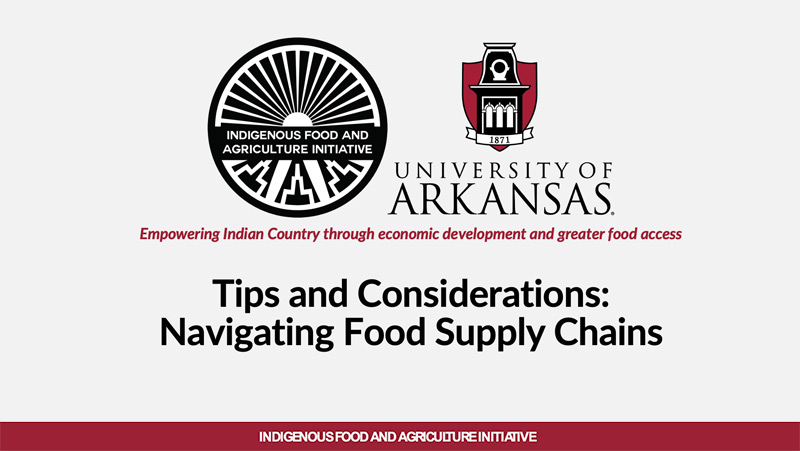Identify Production Output Levels and Market Requirements
Identifying your potential scope or scale of production is an important first step:
- Scale: Level of production for one good
- Scope: Level of diversification, i.e. the number of distinct goods or services produced
For each area of production, consider the following questions:
- What product(s) do you intend produce, e.g. cover cropping?
- What is the amount (either quantity of products or total pounds) of harvest you expect to grow?
Navigating Potential Distribution Channels
Many people may be tempted to think about where they fit in the full supply chain
Distribution Channels
the systems & processes through which goods and services are moved across the supply chain
Node
an organization or individual that produces or moves goods or services across the supply chain
Link
connection points between nodes
Many people may be tempted to think about where they fit in the full supply chain
It’s important to build a relationship with the 1st Tier of Vendors & Customers, i.e.
- All Nodes 1 Link Up
- All Nodes 1 Link Down
- Part of Tribal Food Sovereignty may look at building a closed system supply chain
- Nodes of production and distribution largely owned by and operate within Indian Country
- Serving outside customers promote monetary circulation in the Tribal economies
When looking at selling through potential markets, it’s important to identify a vendor’s purchase order requirements:
- Required Production Scale: Whether production levels can be sustained to meet purchase order minimums
- Required Food Specifications: Standard characteristics identified as desirable or required, e.g. quality, grade, certifications
How does potential revenue generated weigh against production inputs?
Understanding Inventory in Context
Cost of Goods Sold are costs related to producing all products of a distinct, marketable type and/or all marketable products, e.g.
- Labor
- Inputs, e.g. materials used for production
- Overhead (utilities, rent, rent, insurance)
Gross Margin as percentage indicates the amount of sales revenue remaining to cover other costs, fees, capital improvements (renovations and new production equipment/tools), or pay owner(s).
Profit Margin is the profitability of all products marketed or the profitability of all products marketed of a specific type/category, e.g. strawberries
Gross Margin is not the same as Profit Margin. Don’t expect these ratios to be even, but they can be equitable
Remember:
- The scale of production and food specifications required by each distribution channel can differ
- Scaling operations may be more challenging initially than altering production strategies
One of the main obstacles to accessing a distribution channel is meeting scale of production
Farms can only produce so much as their assets allow before production becomes cost prohibitive or not feasible (diseconomies of scale)
One of the main obstacles to accessing a distribution channel is meeting scale of production
Farms can only produce so much as their assets allow before production becomes cost prohibitive or not feasible (diseconomies of scale)
Options:
- Starting Small and Growing operations to progressively increase their cashflow and purchase or improve assets (land, equipment, etc.)
- Partner with an Aggregator food hubs and cooperatives consolidate agricultural products to meet market needs
- Entering New and/or Multiple Markets diversifying distribution channels provides for a more resilient supply chain and provides an opportunity to scale quantity of production
Modeling Resilience in Food Supply Chains
- Contemporary supply chains focused on efficiency, where each link and node was singularly required to fulfill its role
- Delays or breakages in links impacted subsequent distribution
- COVID-19 emphasized the importance of managing relationships reinforcing resilience
- Nearshoring: Identifying and purchasing from suppliers closer to your operation
Decreases lead time for filling order - Diversifying & Building Redundancy: Purchasing supplies and operation inputs from multiple suppliers
Suppliers fill gaps where others see delays - Communication: Building relationships and dialogue with suppliers and customers
Fosters awareness of any issues or delays - Prioritizing Suppliers: Determine which suppliers provide strategic value or are transactional
Prioritizes relationships based on necessity - Diversifying Market Access: Sourcing products and goods to multiple markets
Supports consistent revenue streams
Source: Remko van Hoek, 2021
Accessing New Markets
- USDA Agricultural Marketing Service procures food from certified vendors
- Vendors don’t need to fill the full order but must be able to provide at least a minimum quantity, e.g. a truckload
- https://www.ams.usda.gov/selling-food
- Intertribal Agriculture Council Programs: https://www.indianagfoods.org/aifprogram
- AIF Export Program
Through our export program, we provide members with a platform to showcase their products/goods and culture with the world through international trade show activities and buyer missions. Activities emphasize export readiness and exposure to international markets. - Native Food Connection
Creating domestic market opportunities for Native American and Alaskan Native agribusinesses while providing marketing education and collaboration with Native conferences.
- AIF Export Program

